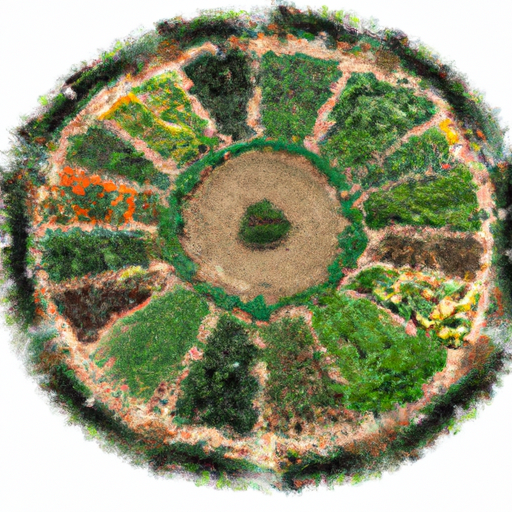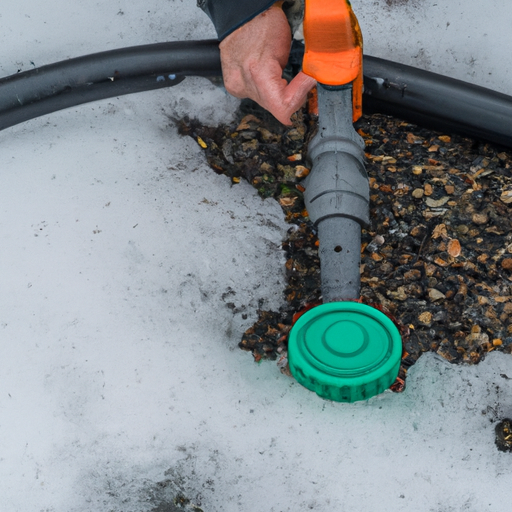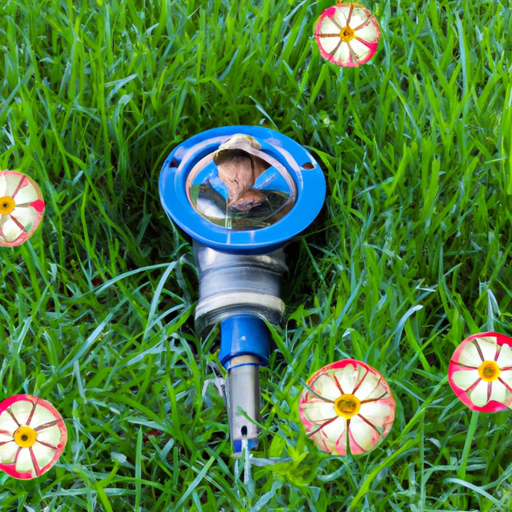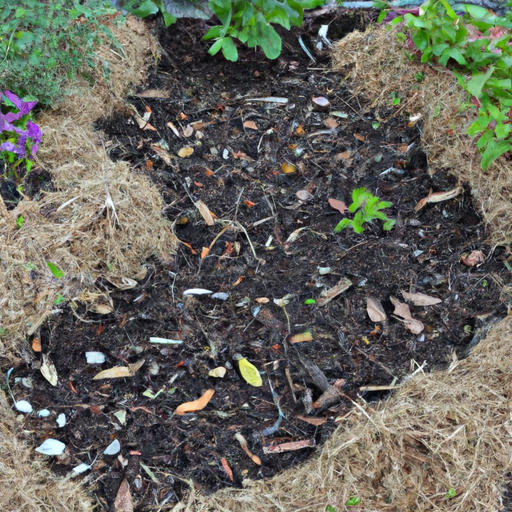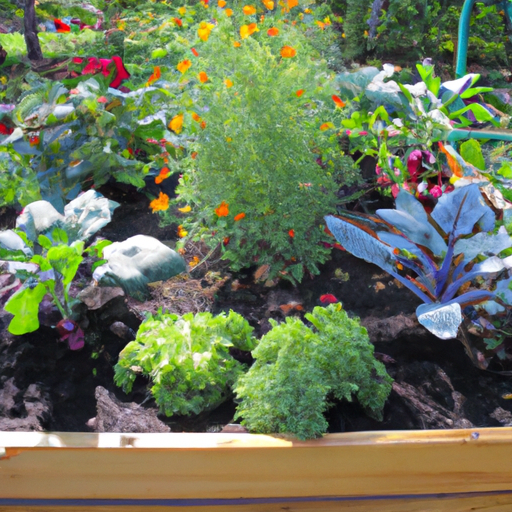Are you looking for ways to maintain and improve the health of your soil? Crop rotation is a time-tested technique that can help keep your soil fertile, reduce disease and pest problems, and increase yields.
In this article, we’ll explore some simple crop rotation techniques that you can use in your garden or farm. Crop rotation involves planting different crops in a specific sequence over several growing seasons. The goal is to prevent depletion of nutrients from the soil associated with growing the same crop year after year.
When plants belonging to different families are grown on a plot of land each season, they feed on different sets of nutrients and leave behind different residues. This helps replenish the soil with essential nutrients while reducing the buildup of pests and diseases that tend to attack specific crops.
Whether you’re an experienced farmer or just starting out as a gardener, these tips will help you protect your soil health with effective crop rotation practices.
The Benefits Of Crop Rotation
Rotating crops for sustainability is a key practice in maintaining soil health. By planting different types of crops each season, farmers can prevent the depletion of nutrients from the soil and reduce pest and disease pressures.
Improving soil fertility with crop rotation involves choosing plants that have different nutrient needs and growth habits, which allows the soil to recover and replenish between plantings. This technique also helps to break up compacted soils and promote beneficial microbial activity.
Overall, incorporating crop rotation into your gardening or farming practices can lead to healthier plants, higher yields, and long-term sustainability for both your land and community.
Understanding The Basics Of Crop Rotation
Did you know that crop rotation has been used for thousands of years? In fact, ancient civilizations like the Romans and Greeks practiced it to improve soil quality.
Today, we still use this technique because it’s essential in maintaining healthy soil. But what exactly is crop rotation? It’s a simple process where different crops are planted each season on the same land.
This helps prevent disease buildup and pest infestations while also improving soil fertility. Companion planting is another way to boost your garden’s health. By pairing certain plants together, they can help repel pests or attract beneficial insects.
For example, marigolds release chemicals that deter harmful nematodes from attacking plant roots. Cover crops are yet another useful tool in crop rotation. They’re planted during fallow periods to protect the soil from erosion and improve nutrient levels by adding organic matter when tilled under before planting again in springtime.
Remember, healthy soil equals healthy plants!
Selecting Crops For Your Rotation Plan
When selecting crops for your rotation plan, it’s important to consider both crop selection and soil fertility.
Crop selection is crucial in ensuring that the same type of plant isn’t grown in one spot year after year as this can deplete soil nutrients and increase pest pressure. It’s recommended that you choose plants from different families to ensure proper crop rotation. For example, if you grow tomatoes one season, switch to corn or beans the next. Additionally, certain crops have the ability to fix nitrogen back into the soil which can benefit subsequent planted crops.
Soil fertility should also be taken into consideration when making decisions about what crops to rotate. Choosing cover crops like legumes – such as clover or peas – can help improve soil health by adding organic matter and reducing compaction. These types of plants also add beneficial microbes to the soil which can aid in nutrient uptake by other plants during subsequent growing seasons.
To summarize:
– Choose plants from different families
– Rotate between nitrogen fixing and non-nitrogen fixing crops
– Incorporate cover crops like legumes
– Consider planting green manures (crops grown specifically for their ability to enrich soil)
– Avoid planting cash-crop relatives back-to-back
By following these guidelines when selecting crops for your rotation plan, you’ll help protect your soil health while improving yields and overall garden productivity without resorting to chemical fertilizers or pesticides.
Implementing Your Rotation Plan
Did you know that implementing a rotation plan can increase soil fertility by up to 25%? It’s important to consider the timing of your crop rotations in order to maximize the benefits. A well-planned rotation will not only help manage pests and diseases, but also ensure proper nutrient management for your soil. To assist with planning, use this table as a guide:
| Year | Crop | Nutrient Depleted | Suggested Rotation |
| — | — | — | — |
| 1 | Corn | Nitrogen, Phosphorus, Potassium | Follow with beans or peas |
| 2 | Beans or Peas | Fixes nitrogen into soil | Follow with brassicas (cabbage, broccoli) |
| 3 | Brassicas (Cabbage, Broccoli) | Heavy feeders of nutrients such as calcium and magnesium. Can leave soil acidic.| Follow with corn or tomatoes |
Remember that it is crucial to rotate crops within different plant families to avoid depleting specific nutrients from the soil. Additionally, take note of any pest or disease problems in previous years when planning your rotation schedule. By implementing these techniques, you’ll be on your way towards healthier and more productive soils without having to rely heavily on synthetic fertilizers and pesticides.
Evaluating The Success Of Your Crop Rotation
Now that you have implemented crop rotation techniques to protect your soil health, it is important to measure the effectiveness of your efforts. This will help you adjust for optimal results in future growing seasons.
One way to evaluate success is by monitoring pest and disease levels throughout the year. If these issues are reduced compared to previous years, then your crop rotation plan is working well.
Additionally, keeping track of yields can indicate if certain crops are thriving or struggling in their designated rotations. Look for patterns over multiple years to identify any areas where adjustments may be needed.
Measuring effectiveness and adjusting accordingly will lead to a more successful and sustainable garden in the long run.
Frequently Asked Questions
How Does Crop Rotation Affect The Nutrient Content Of The Soil?
Crop rotation can have a significant impact on the nutrient content of soil. By alternating crops, farmers can avoid depleting specific nutrients from the soil and ensure that essential minerals are replenished over time.
This process also promotes nutrient cycling; as one crop is harvested, the remaining organic matter breaks down into valuable nutrients for subsequent plantings.
The result? A healthier soil ecosystem capable of supporting higher crop yields without relying on synthetic fertilizers or other external inputs.
As any Master Gardener knows, crop rotation is an effective way to maintain long-term soil health while maximizing agricultural productivity.
Can Crop Rotation Help Reduce The Need For Synthetic Fertilizers And Pesticides?
Organic farming and sustainable agriculture practices have long recognized the benefits of crop rotation, as it helps reduce the need for synthetic fertilizers and pesticides.
By rotating crops in a field, essential nutrients are replenished, pests are controlled naturally, and soil health is improved.
This method allows farmers to rely less on chemical interventions and promotes a healthier ecosystem overall.
Crop rotation techniques have been employed for centuries by farmers worldwide, and modern agricultural science has only reinforced its effectiveness.
Incorporating this practice into your farm or garden will not only save you money but also help protect our environment for future generations.
Are There Any Crops That Should Not Be Included In A Crop Rotation Plan?
Are you considering crop rotation for your garden or farm?
While this technique can offer many benefits, such as improving soil health and reducing the need for synthetic fertilizers and pesticides, there are some crops that should not be included in a rotation plan.
For example, planting nightshades like tomatoes or potatoes in the same spot year after year can increase the risk of disease buildup in the soil.
Additionally, certain plants may have different nutrient needs that could lead to imbalances over time.
As with any gardening decision, it’s important to weigh both the advantages and disadvantages before implementing a crop rotation plan.
How Long Should Each Crop Be Grown In A Rotation Plan Before Switching To A New One?
When it comes to crop rotation, choosing the optimal durations for each crop is crucial.
Not only does this prevent soil depletion and nutrient imbalances, but it also promotes diversity in your garden which can lead to a healthier ecosystem overall.
As a Master Gardener, I recommend rotating crops every one to three years depending on the specific plants involved.
Some fast-growing vegetables like lettuce may only need to be rotated annually while others such as tomatoes could benefit from a longer rotation cycle of two or three years.
By experimenting with different rotation plans and keeping track of plant health and yields over time, you’ll find the perfect balance for your garden’s unique needs.
Can Crop Rotation Help Prevent Soil Erosion And Improve Water Retention?
Crop rotation is a valuable tool for preventing soil erosion and improving water retention. By rotating crops, you can avoid depleting the same nutrients from your soil over time, which can lead to erosion and poor water retention.
Additionally, crop diversity benefits both the plants themselves and the surrounding ecosystem by creating a more balanced environment that supports healthy growth. Maximizing crop yield is also possible through proper rotation techniques, as it allows for optimal nutrient uptake and reduces pests and disease buildup in the soil.
Overall, incorporating crop rotation into your gardening practices is an excellent way to protect your soil health while promoting robust plant growth.
Conclusion
As a Master Gardener, I can attest to the power of crop rotation techniques in protecting soil health.
Just like how our bodies need proper nourishment and exercise to function at their best, so does the soil that nurtures our crops.
By rotating different types of plants throughout the growing season, we can replenish vital nutrients while reducing the risk of disease and pest infestations.
Imagine your garden as a dance floor where each plant takes turns leading and following.
Some plants may be better suited for specific seasons or conditions, just like some dancers perform better with certain partners or music styles.
By mixing up the order and variety of plants in your rotation plan, you create a harmonious environment where every crop has its moment to shine.
So next time you’re planning out your garden layout, remember to protect your soil’s health by incorporating these valuable crop rotation techniques into your routine!
